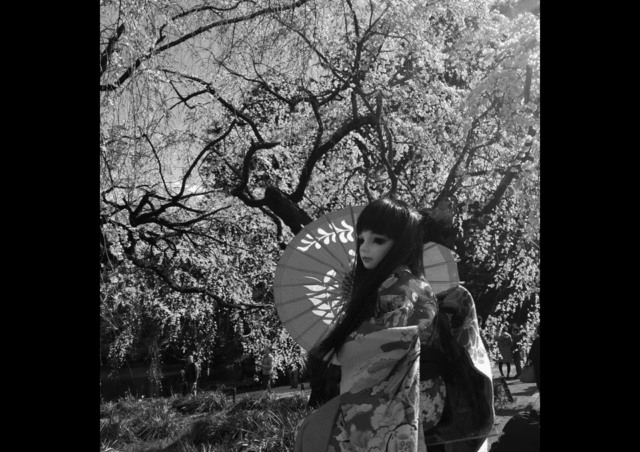By David Yamaguchi
The North American Post
What more can be written about cher ry blossoms? Such were my thoughts on being asked to contribute a few words here on the topic. Later, however, I real ized that I could highlight what is already out there, aided by the Internet, which greatly extends my modest home library.
At the outset, two basic points merit mention. The first is that Japanese literature on cherry blossoms does not extend back into the mists of Japanese history. There is no “cave art” on cherry blossoms. Henry Scott Stokes of the New York Times points out that there are only a few poems about sakura among the 4,500 gathered in the Manyoshu, the “Collection of Ten Thousand Leaves.” Poems compiled therein sometime after AD 759 date from as early as the fifth century.
Stokes goes on to say that Japanese historical entries on the pink petals begin mainly after the Japanese capitol was moved from Nara to Kyoto, the historical event behind the AD 759 time-marker. Wild cherry trees must have abounded in the hills around Kyoto.
The second basic point is that the Japanese expression for the combined feelings of appreciation for beauty and sadness that the falling blossoms evoke is, “Mono no aware.” Wikipedia translates it as, “the transience of things.” A deeper interpretation is the brevity of human life.
With the basics behind us then, let us turn to some of the writings of past scribes on the topic of cherry blossoms:
“Hisakata no
Hikari nodokeki
Haru no hi ni
Shizu kokoro naku
Hana no chiruramu
This perfectly still
Spring day bathed in the soft light
From the spread-out sky,
Why do the cherry blossoms
So restlessly scatter down?”
—Ki no Tomonor i (f rom the “Kokinshu,” AD 905, in “Anthology of Japanese Literature,” translation by Donald Keene)
“Things That Lose by Being Painted
Pinks, cherry blossoms. Yellow roses.
“Things That Gain by Being Painted
Pines. Autumn fields.
Cranes and deer.
A very cold winter scene;
an unspeakably hot summer scene.”
—Sei Shoganon (“The Pillow Book,” AD ~1002)
Kisagata no
Sakura wa nami ni
Uzumorete
Hana no ue kogu
Ama no tsuribure
At Kisagata
A cherry tree is covered
At times by the waves:
Fishermen must row their boats
Above the cherry blossoms.
—Matsuo Basho (from “The Narrow Road of Oku,” 1702, in “Anthology of Japanese Literature”)
“… And I see before me what is infinitely more interesting,—a grove of cherry-trees covered with something unutteringly beautiful,—a dazzling mist of snowy blossoms clinging like summer cloud-f leece about every branch and twig; and the ground beneath them, and the path before me, is white with the soft, thick, odorous snow of fallen petals.”
—Lafcadio Hearn, from “My First Day in the Orient,” in “Glimpses of Unfamiliar Japan” (1907)
On that long-ago day in 1890, journalist Hearn was touring Yokohama by rickshaw. He could not have known then that he would spend the rest of his days in Japan, capturing the traditional culture vaporizing before his eyes under the onslaught of western technology and civilization.
Editor’s Note: David Yamaguchi is a freelance writer who has contributed essays to the North American Post since 2006. He joined the staff of the paper in March.





